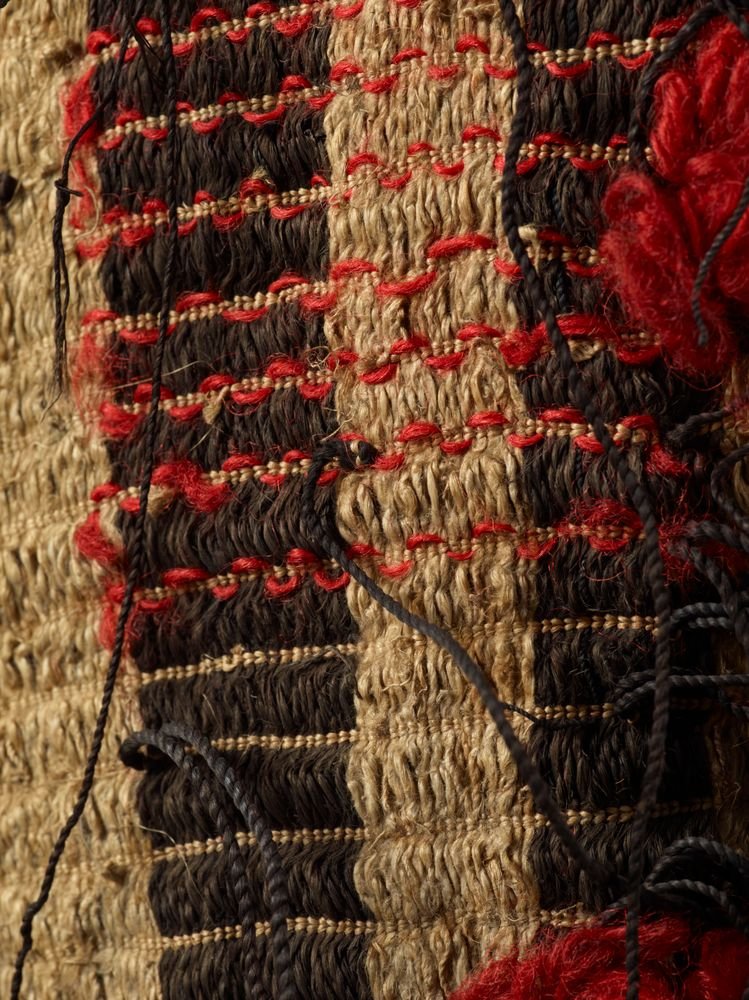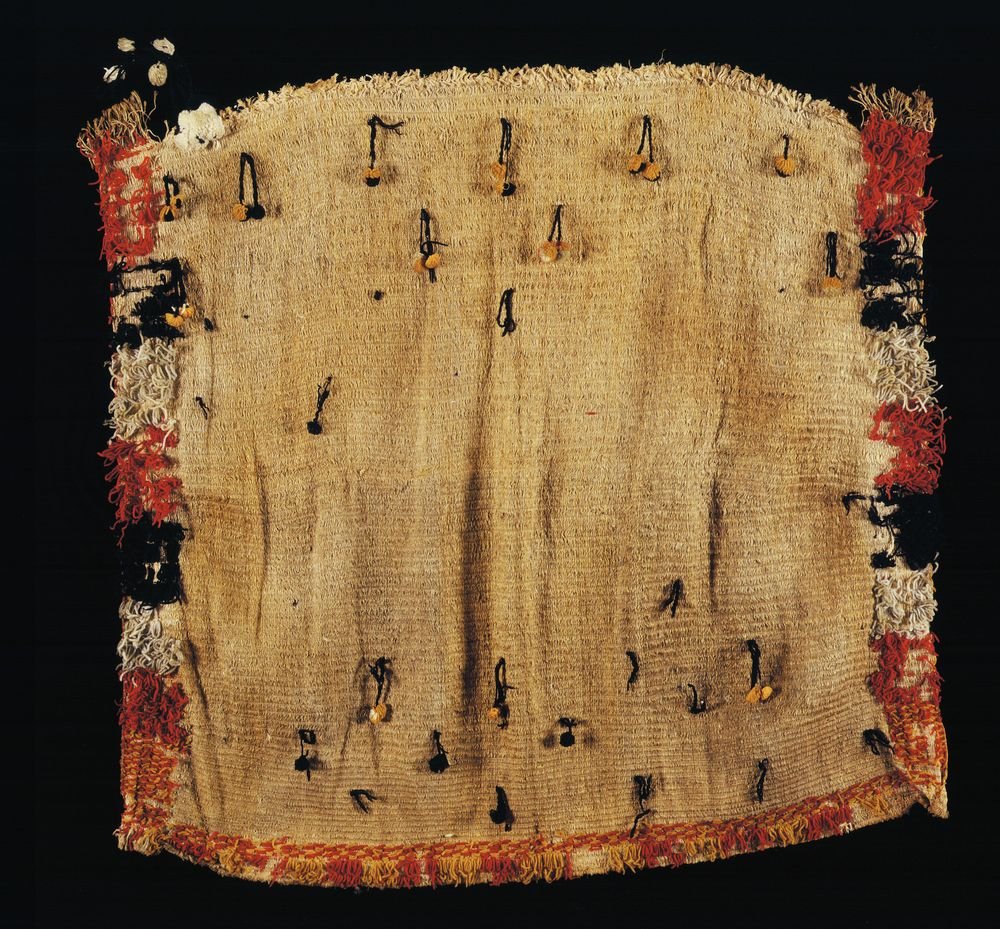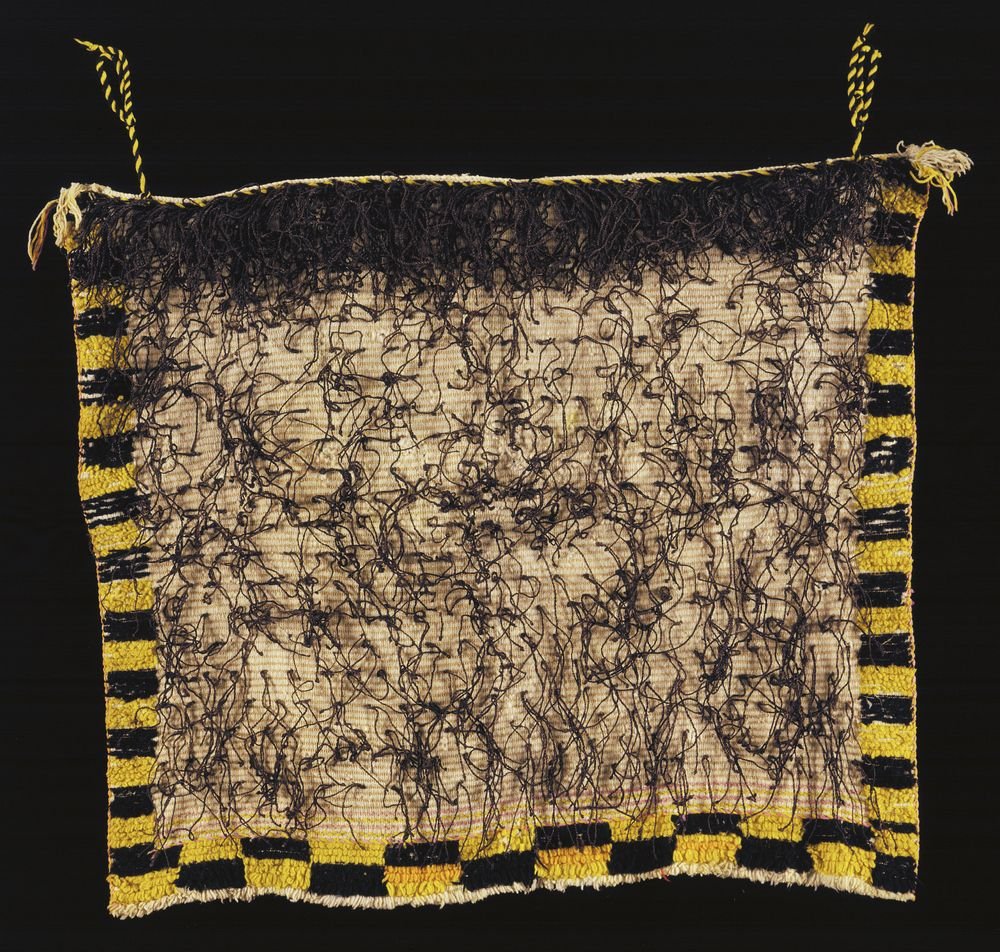By Kahu Kutia
If theres one thing researching through taonga collections has taught me, it’s that toi Māori is expansive, resourseful, and totally open to whatever materials and tools a ringatoi has at their disposal. There’s definitely those traditional materials, bone, kōhatu, rākau, harakeke etc, where a lot of our toi stem from. But our ringatoi have never been limited. I remember seeing korowai in the collections at Te Papa, that had elements with wool on them too, something which has been an abundant and available resource to our people in the last century.
Experimenting:
So I decided to see what kind of colour kōkōwai might lend to wool. My grandmother spins and knits her own wool, and comes from a background and time where dyeing fabrics with things from the taiao was normal. This seemed like a nice way to combine our interests, spend some time together, and learn something new. To disclaim, I’ve never dyed using whenua or wool before, so some of you might have your own tips and thoughts about how to achieve the best colour!
Factors:
KŌKOWAI DYE
I gathered some really beautiful kōkōwai clay whenua the week before.
It came from part of a bank that looked like this:
MAKING THE DYE:
To make my dye, I boiled about a cup of kōkōwai clay unprocessed with about 3.5L of water. I found that a little went a long way, and I could probably have used half as much and still got a good result. But at least this make for a beautiful strong rich colour.
I boiled it all up and noticed no colour change from the raw material to when the heat was added. I left this liquid to sit overnight. Because I was impatient I didnt sift out the rougher sediment, but anything that got stuck in the wool was easy to wash out.
SOY MILK
We’ve used soy milk and whenua before to dye other materials, but wanted to see how it would behave with wool. From my research online, it seemed like any milk with good protein content could be used. Soy milk acts as a physical binder of colour to materials, rather than a chemical one.
This article in particular was helpful, with someone working with soybeans processed in to a milk, and a Japanese iron oxide whenua.
MORDANTS
Mordants help a colour to chemically bond to a fibre or material. Generally, mordants will contain tannins that do that work.
I decided to try making a mānuka wai because we had some trees in the backyard, and also to try onion skins. Onion skins obviously wouldnt have been traditionally Māori, but are often used as a mordant and colour dye elsewhere, and my nan had a big bag of them saved up anyway!
This was an interesting article I found on the tannin content in the barks of different rākau Māori.
Toi Maramatanga is a thesis by Kahutoi Te Kanawa, and it had some really interesting kōrero in the Appendix about traditional dyes and mordants
MAKING MY WAI:
I soaked the bark and skins in cold water, and brought it up to a boil. Left boiling for about half an hour. As for quantities? I eyeballed it based on what felt right, and what I was able to gather sustainably.
Dyeing the wool:
Wool is very sensitive to heat, so when dyeing the wool, you should be very careful with it! Heat and movement can cause the wool fibres to felt, creating something thats not really usable for these purposes.
PROCESS I FOLLOWED TO DYE:
Heat up the dye in the pot. Bring it to the boil.
Once it is boiling, turn off the heat, and leave to settle. Wait till the water is no longer boiling or bubbling, and is nice and still, but still hot.
I rinsed all my skeins (the spun lengths of wool) in water, so they were nice and wet before placement in the dye.
I placed my skeins in to the water one by one. Pushing with spoon, just enough to ensure the wool was fully submerged in dye, without stirring or moving the water too much.
Leave your wool in the dye for as long as possible. For this experiment I was time pressured and could only do 24 hours. An experiment I did later and soaked for 3 days retained way more colour!!
The results, and some final whakaaro:
As you can see from this image, the kōkōwai brought out a really beautiful pink in all of the wool! And such a noticable colour difference to the original untreated wool. The onion skin dyed skein (yellow, in the middle, has obviously taken on a lot of colour from the onion skins as well, which has impacted on the overall colour there. Across the board, not a tonne of colour difference between different methods.
I made my first ever Instagram reel to document the process. Click below to open our IG, and you’ll find it under the reels section!
Reflections:
I didnt dry the wool properly between the wai/soy treatments and dye. I think this would more dramatically impact the colour retention.
Overall, the best colour in this case came from #4 - the skein treated with a 19 hour soy milk soak.
Taking time at every stage is so important!! The more time the better!!
Spend more time asking your nan lots of questions. They are endless wells of knowledge.
All of these colours are SO beautiful and I’m stoked with them all. It’s been almost a month since I did this experiment and the colour is still strong in all of the wool.
Check out the gloves that my nan made incorporating some of the kōkōwai dyed wool in to them. Sooooo cute!!













